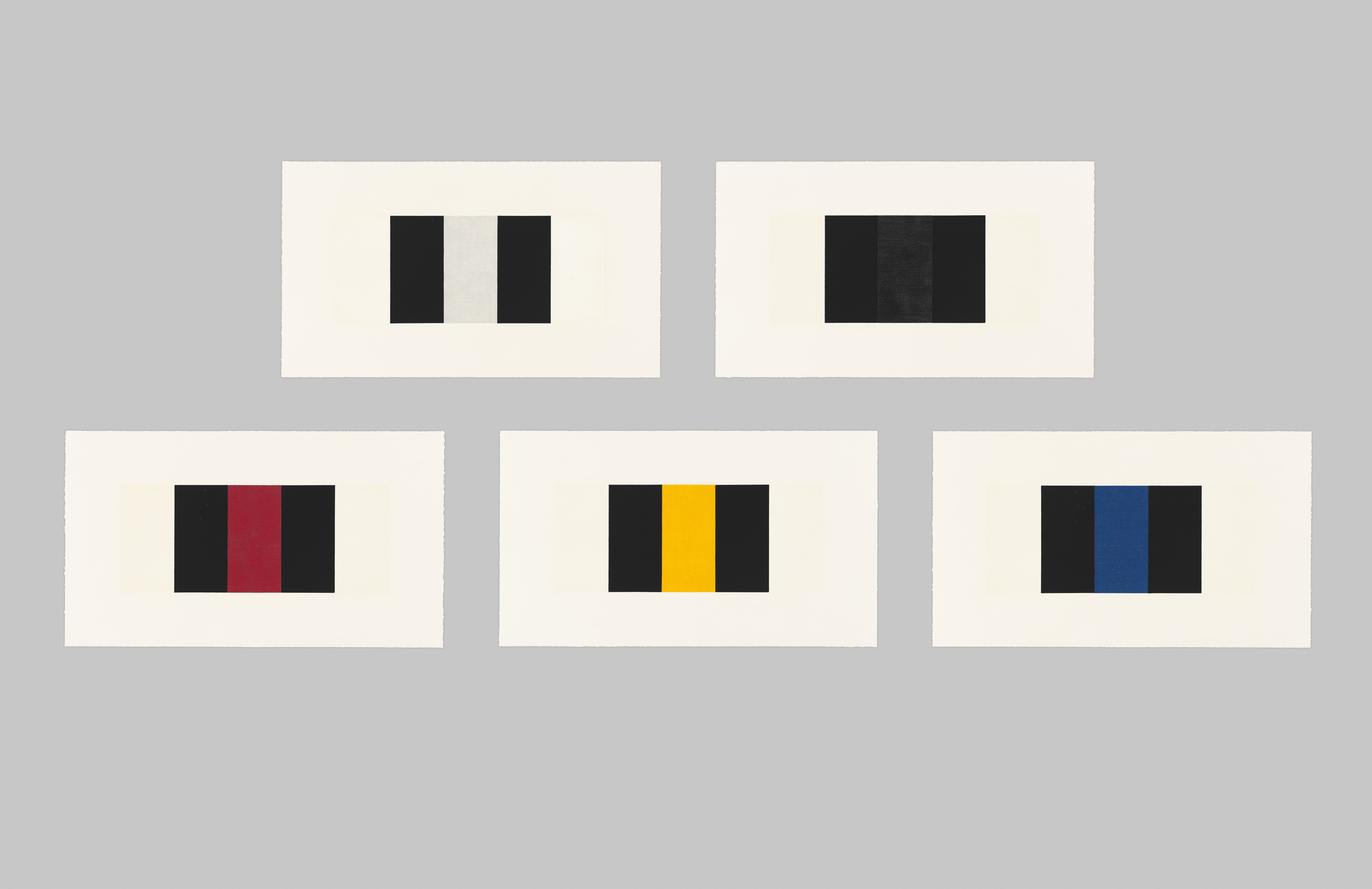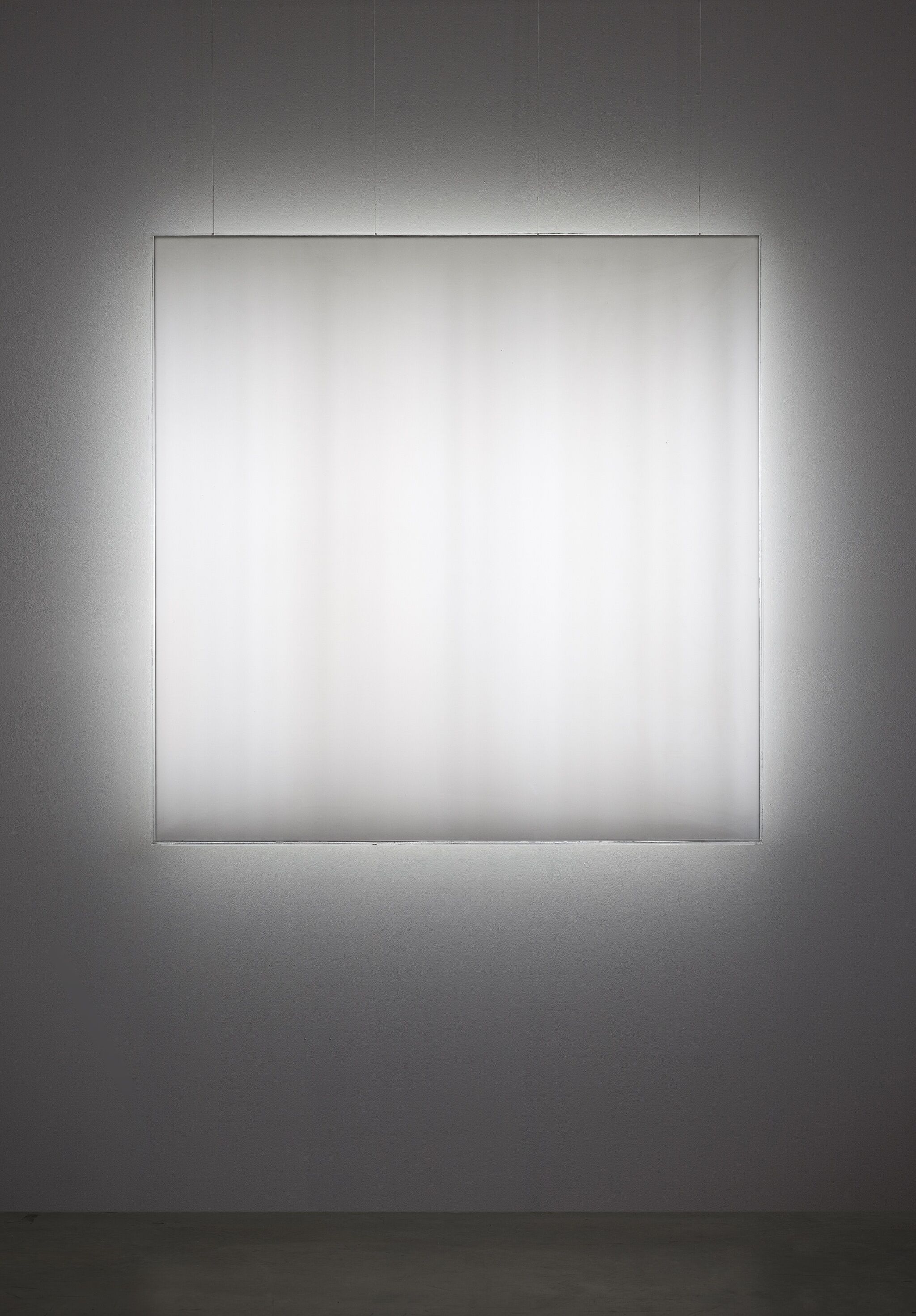Mary Corse, Untitled (White Light Series), 1966
June 4, 2018
0:00
Mary Corse, Untitled (White Light Series), 1966
0:00
Narrator: Corse made her earliest Light Paintings—like this one—using fluorescent tubes, which gave off an even light. In these first works, she recognized that she’d always have to deal with cords and outlets, which she found distracting. Here, the cord runs behind the wall. But early on, Corse went to much greater lengths to eliminate them.
Mary Corse: I searched around for a technology where I could get rid of the wires. I got very into Nikola Tesla, you know, Tesla, now the car is named after him, but he was a major scientist. And I realized that, oh, I can take this high frequency generator and put it in the wall.
Narrator: The light in the the earlier works comes from tubes filled with argon gas, which are powered by the hidden Tesla coil’s electromagnetic field. The materials required to engineer a Tesla coil were highly specialized, and they required advanced training.
Mary Corse: There was this company, Edmund Scientific, where you could get all kinds of scientific parts. In order to get the parts, you had to take a test. So I had to study some physics in order to pass this test.
Narrator: Corse’s studies proved very important to her. In particular, she was struck by the idea that in quantum physics you could see light either as a particle or a wave, but not both at the same time. For her, this fact underscored the idea that perception depended on the observer, and that it would always be subjective. For a long time, she had worked to make her painting as objective as possible. But studying physics made her feel that if she wanted her art to be more real, it had to be more subjective.
Mary Corse: That's why I went back to painting, because of the brushstroke. But I didn't want to leave the light, because the light is about our essence. So I went searching around to how to put the light in the painting.
Narrator: The first painting to result from this search hangs near the entrance to this room.
Kim Conaty: Untitled (First White Light Series) is the first example of Corse's experimentation with an altogether new material for her, glass microspheres. In Corse's search for a way to be able to get light into painting or have light emitted from painting itself, she came across, by chance, an interesting industrial material.
She was driving along the road in Malibu, California, when she noticed that the light coming from behind her was hitting the highway lines and illuminating them. This is, of course, the glass microspheres, a material also known as retroreflective beads, that have been used industrially for highway safety.
Mary Corse: And so I went back, after the light pieces, to the paintings with the micro-glass spheres, the highway safety spheres, which put the light in the painting, and put it in your perception—because as you move, it changes—So, you realize that perception is creating the art.


